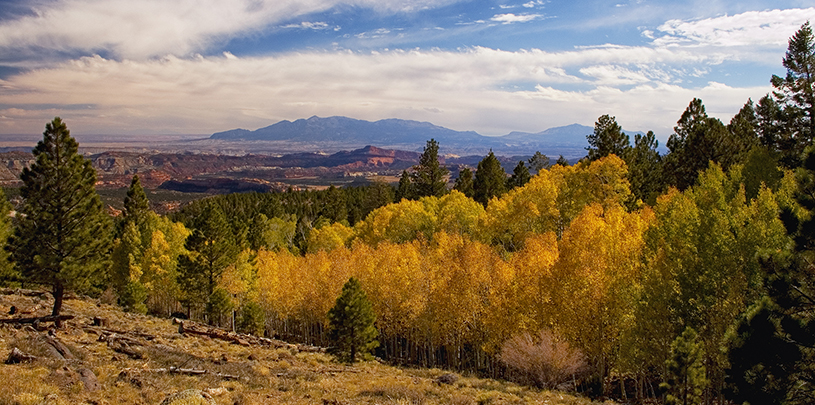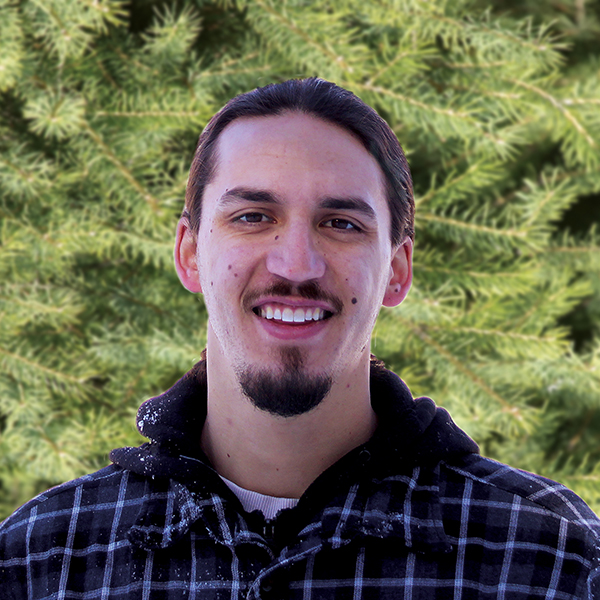
 by Kamran Zafar, Field Attorney
by Kamran Zafar, Field Attorney
Even with this year’s wet winter promising a less active fire season, wildfire fears are top-of-mind for politicians from Salt Lake City to Washington, D.C. Secretary of Agriculture Sonny Perdue spent a day in Utah on May 22, making it the 50th U.S. state he's visited since taking office. Last on the list, perhaps, but the trip made news, partly because an expected announcement on the fate of Utah’s petition to opt out of parts of the Roadless Area Conservation Rule (known as the "roadless rule") didn’t materialize.
Instead of announcing whether a process would soon begin to strip protections from Utah’s roadless national forests, Secretary Perdue and Utah Governor Gary Herbert signed a shared stewardship agreement that encourages cooperation between state and federal foresters when it comes to preparing for wildfire.
When pressed by reporters, Secretary Perdue said only that the Forest Service (a division of the Department of Agriculture) is still reviewing Utah’s petition. We had hoped Secretary Perdue would use his visit to Utah to soundly reject Utah’s unnecessary petition to gut protections for 3.5 million acres of pristine national forests.
After all, the most practical and cost-effective way to make a difference in saving homes, lives, and property at risk from wildfire is for property owners and land managers to take action in forests closest to homes, not in remote backcountry roadless areas.
The roadless rule protects more than 4 million acres of national forest lands in Utah from commercial logging and most new road building, but some Utah politicians want the rule weakened in some places, and eliminated entirely in others — like southern Utah’s Boulder Mountain — the highest, largest forested plateau in North America and the top stair of the Grand Staircase.
If you’ve been to Boulder Mountain, you’ll have noticed a total absence of homes at risk from destruction by wildfire there, so why would the governor’s office want that roadless area eliminated? A document shared with the Trump transition team after the 2016 election states Utah’s goal clearly: “[r]evoke the Forest Service's roadless rule and reinstate timber production on federal land that has been managed as special areas or roadless areas."
The governor’s office says (in public) that the state needs to gut the roadless rule to “give our forest managers the tools and flexibility they need to improve the health of our forests and watersheds, and to reduce wildfire risks.” But the roadless rule already allows actions to mitigate fire risk, and we hope the newly inked shared stewardship agreement will allow for the kind of flexibility Utah desires to protect homes and lives.
In the words of former Forest Service Chief Mike Dombeck in a recent New York Times op-ed: “We don’t need to open up 88 percent of Utah’s four million acres of federal roadless areas to road building and timber harvests. The state’s petition is merely another attempt to circumvent important environmental protections.” Dombeck went a step further, saying the state’s claims that roadless areas hinder wildfire mitigation “are without merit.”
Taking notice of the threat to the integrity of roadless forests, members of Congress have taken action. H.R. 2491/S. 1311, the Roadless Area Conservation Act of 2019 was introduced on May 2, 2019 by Sen. Maria Cantwell, D-Wash., and Rep. Ruben Gallego, D-Ariz. The act would create lasting, permanent protection for inventoried roadless areas in our national forests by making the roadless rule into the roadless law across the nation. The act would protect roadless areas by making the rule’s prohibitions on road construction, road reconstruction, and logging not subject to interference by anti-public lands politicians in the states.
Roadless areas protect our most pristine forests, healthy watersheds, recreation and hunting opportunities, clean water, healthy fish and wildlife, and cultural sites and resources. On top of all that, roadless areas actually reduce wildfire risk (because most wildfires are human-caused and start near roads). National forests also provide clean drinking water to over 60 million Americans, containing all or portions of 354 municipal watersheds. Preventing road building in these areas helps protect water quality for downstream communities.
The act’s protections are also a good idea from an economic standpoint. National forests sustain over 220,000 jobs and contribute more than $15 billion to the economy. Our national forests are already crisscrossed by more than 370,000 miles of roads — more than the entire U.S. interstate highway system! Maintaining these roads has resulted in a $3.2 billion road maintenance backlog, meaning taxpayer money is best spent fixing what we already have, not building more roads.
The majority of our national forests are currently open to development, so protecting what remains of our roadless national forests should be a high priority. Whether you are one of the 240 million people who live within 100 miles of a national forest or national grassland or just appreciate the long list of benefits that roadless areas provide, it is up you to guide the future for our national forests. The Grand Canyon Trust supports the Roadless Area Conservation Act, and you should too!
Utah is seeking to allow new road-building and commercial logging on nearly 4 million acres of pristine national forest roadless areas in the state. Utah’s petition is now on Secretary of Agriculture Sonny Perdue's desk. Please urge Secretary Perdue to reject Utah’s roadless petition.
Comments (1)
Leave A Comment